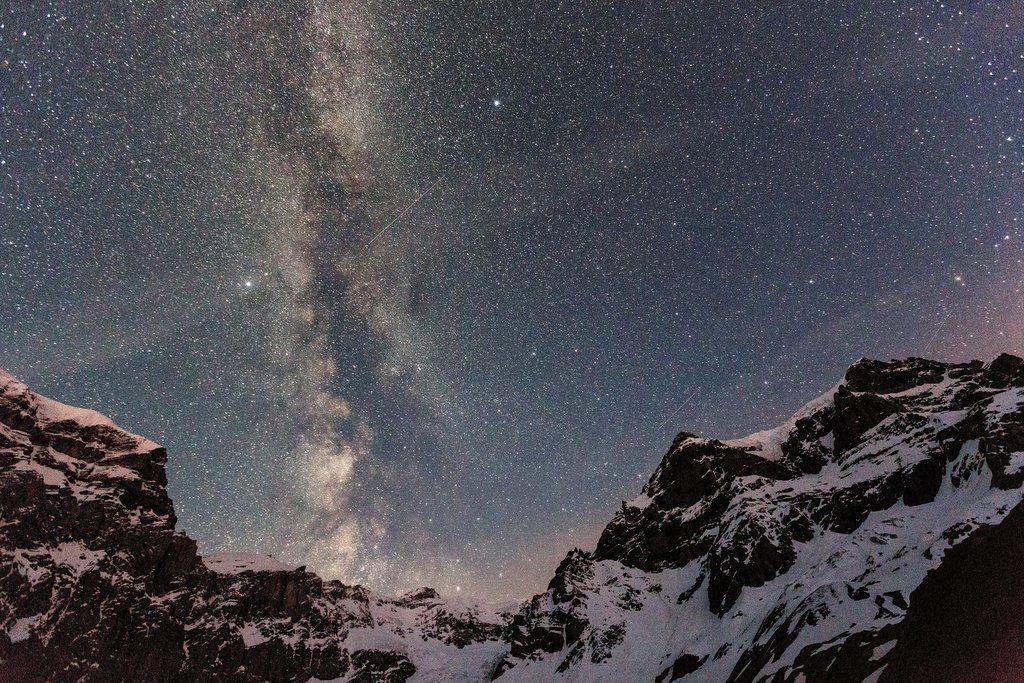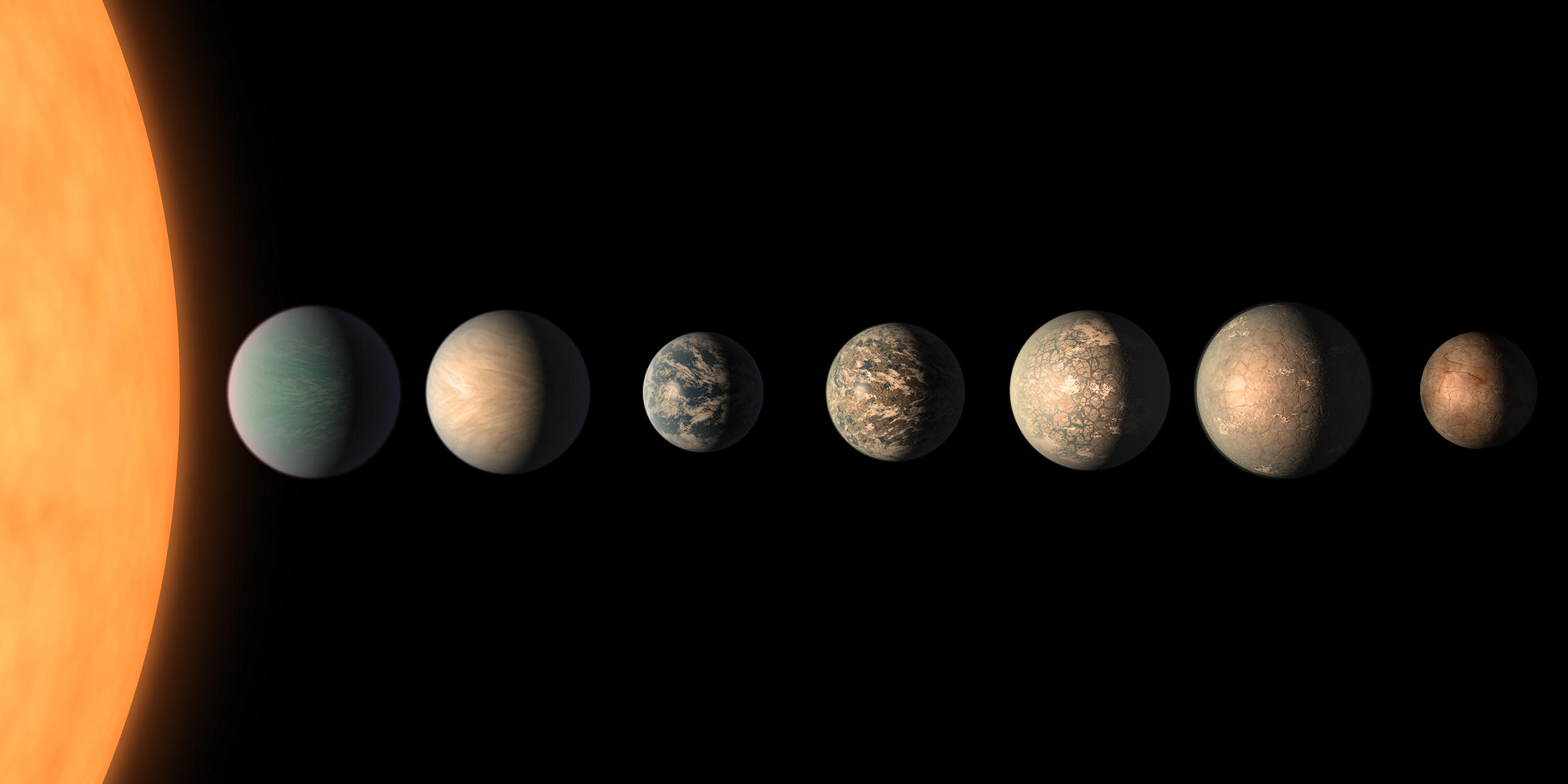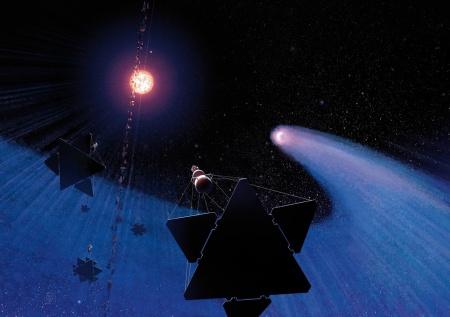The phantom at the edge of our solar system

Stargazers worldwide are feverishly searching for a previously unknown giant planet. Among them is Swiss astrophysicist Christoph Mordasini of the University of Bern, who believes we will soon know for sure whether there are eight planets in our solar system…or nine.
Why does our sun rotate at an oblique angle? Why do some celestial bodies at the edge of our solar system move in peculiar orbits? Something is causing imbalances in our solar system. But what is it? Some astronomers believe a large, as-yet undiscovered planet could be causing these disruptions.
Two researchers in particular are convinced by this theory: the astrophysicists Konstantin Batygin and Mike Brown at the California Institute of Technology. In 2016, they wrote in a scholarly article that they had found evidence suggesting the existence of a ninth planet. They had analysed irregular orbits of small celestial bodies on the far side of Neptune, and concluded that these could have been caused by a large planet.
Ever since, the search for number nine has preoccupied stargazers all over the world – including Christoph Mordasini. The astrophysicist, who teaches and researches at the University of Bern, is currently torn on the issue.
“It’s a major controversy,” Mordasini says. “Many different publications have appeared since the work of Brown and Batygin was published. Some support them; others criticise them and say distortions in their observations are responsible for the apparent indications.”

A well-known solar system?
Finding a ninth planet would be a scientific sensation, because experts believe our solar system is very well researched. Six of the eight planets known to us today were already recognised in antiquity: Earth, Venus, Mercury, Mars, Jupiter and Saturn. They can all be observed with the naked eye because they are relatively close to Earth and the sun, and therefore emit plenty of light.
The seventh planet, Uranus, was first discovered in 1781. It is more distant. Further still from the sun is Neptune, which was discovered in 1841. In 1930, the last planet was found: Pluto, which is the furthest away of all and was once number nine. But in 2006, Pluto was downgraded to a so-called dwarf planet. This was primarily due to the discovery of a host of other bodies beyond Neptune which had characteristics similar to Pluto’s.
Both Pluto and Neptune were discovered thanks to orbit perturbations shown by other bodies. And orbit perturbations now suggest there is a new number nine.
An icy giant without life
But what is there to say about this phantom planet? “It would presumably have no firm surface but would be comprised of ice and gas,” says Mordasini, who in 2016 co-wrote a study on the likely makeup of the hypothetical planet with Esther Linder, a PhD student.
“There is unlikely to be any life there. We also estimate that it would have approximately four times the circumference of earth and almost ten times its mass.”
Planet Nine would be very far from Earth and the sun – much further than Neptune ad Pluto.
“If the distance from Earth to the sun were one metre, Planet Nine would be 600 metres away from Earth,” Mordasini explains.
Answers on the horizon
The search for Planet Nine will soon yield results – of that Mordasini is sure.
“In five or ten years at the most we will know whether it is there or not,” he says. There’s a reason for this view: telescopes are becoming increasingly powerful.
“If it is as big as we think, then it should be clearly detectable with future telescopes,” Mordasini explains, adding that the magnitude of a celestial body determines how bright it appears from Earth.
“Planet Nine would have a magnitude of about 24, but current telescopes that could find it can only identify those with a magnitude of up to about 22.”
Aside from light sensitivity, the viewing field of a telescope is also important – the section of the sky that it can record.
“There’s a chance that it will be found with the Subaru telescope on Hawaii. In 2022, the Large Synoptic Survey Telescope will also start operating in Chile. This can identify up to magnitude 26, and has an extraordinarily large viewing field.”
No tenth planet
But a ninth planet would be the last, Mordasini believes, explaining that planets further afield would not have a strong enough gravitational connection to the sun to keep them from drifting away.
There is only one question left to clear up, and that is the ninth planet’s name. What would the new – and indeed the last – planet in our solar system be called?
“So far, they have all be named after Roman gods,” says Mordasini. “The International Astronomical Union, which strictly regulates the names of the cosmos, has so far not spoken about this because the discovery of another big planet in our solar system was not anticipated. So, we will have to wait and see, but it looks likely that it will again be a reference to old myths.”
Translated from German by Catherine Hickley

In compliance with the JTI standards
More: SWI swissinfo.ch certified by the Journalism Trust Initiative











You can find an overview of ongoing debates with our journalists here . Please join us!
If you want to start a conversation about a topic raised in this article or want to report factual errors, email us at english@swissinfo.ch.